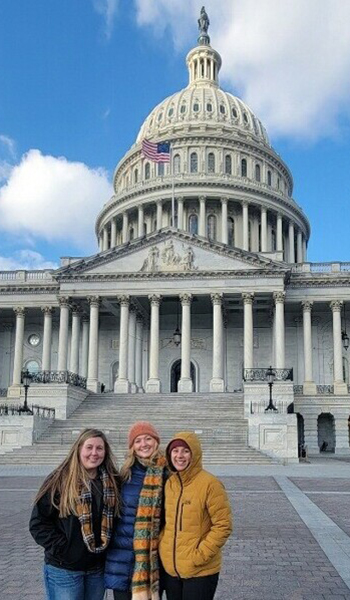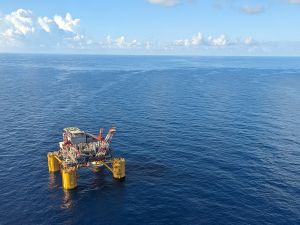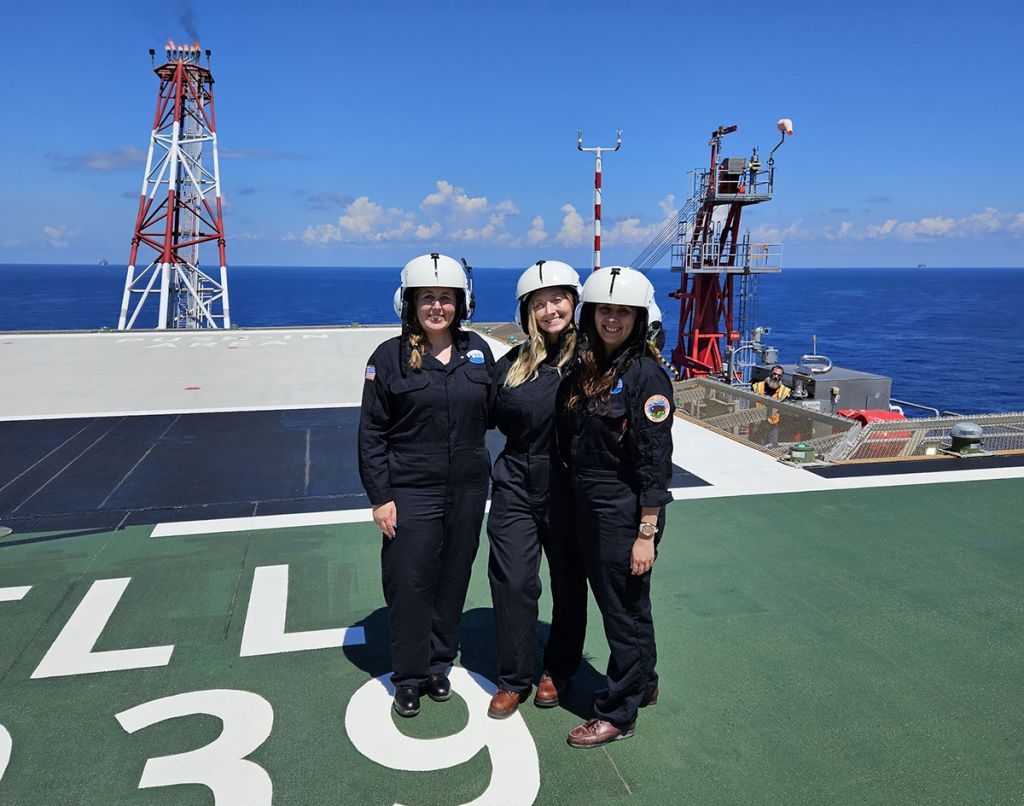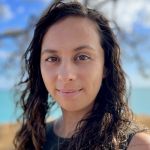Navigating the depths of marine policy: My Knauss Fellowship experience
by Emily Young
As a deep-sea ecologist, my research life revolved around the intricate details of tiny worms dwelling in the darkest corners of the ocean. My grad school years were spent immersed in research, teaching, and science communication, but one vital aspect was missing from my journey to becoming a well-rounded scientist: experience in science policy. Fortunately, Sea Grant’s John A. Knauss Marine Policy Fellowship provided me with the perfect opportunity to dive into the realm of science policy in the federal government.

My Knauss Fellowship placement is with the Bureau of Ocean Energy Management (BOEM), an agency that, despite its relatively small size of around 600 employees, is tasked with an enormous mission: managing the responsible development of America’s offshore energy and mineral resources across approximately 2.5 billion acres of seafloor. BOEM’s jurisdiction extends beyond state waters to 200 nautical miles from U.S. coastlines, encompassing the deep-water habitats that I hold dear. This placement allows me to apply my knowledge of deep-sea ecosystems to environmental management in the context of new-to-me industries and activities, such as offshore wind energy, oil and gas operations, and sand and gravel mining.
Within BOEM, I am part of the office that administers the Environmental Studies Program. This office is responsible for developing, funding, and managing the scientific research required to inform BOEM’s decision-making processes. Here, I’ve had the privilege of collaborating with a diverse team of scientists, including those specializing in physical, chemical, biological, and social sciences. Together, we identify BOEM’s scientific needs, generate and peer-review study proposals, and evaluate, grant, and manage contracts with external partners who execute these scientific studies. I had applied to the Knauss Fellowship wanting to witness first-hand how science is incorporated into the management of our oceans, and time spent with this office is certainly providing me with that experience.
I was also given a specific mission for my fellowship year in this office: enhancing the climate literacy of BOEM’s workforce. Climate change is intricately linked to BOEM’s activities, whether it’s monitoring emissions from oil and gas platforms, promoting renewable energy development, or adapting management decisions to evolving ocean conditions. My role involves ensuring that all BOEM staff have the training, resources, and information necessary to consider climate change when developing environmental studies and assessments.
When applying for the Knauss Fellowship, applicants are encouraged to consider their preference for “on the ground” or “30,000-foot-high” level experiences. For example, some office placements are focused on the day-to-day details of individual projects within a research group, and others involve a big-picture perspective of longer-term policies involving multiple agencies. Since climate literacy is a federal-wide priority, this fellowship has allowed me to be involved in projects at all levels: within my office, my agency (BOEM), my department (Department of Interior), and also within an interagency context coordinated by the U.S. Global Change Research Program (USGCRP). It has been a privilege to represent the deep-sea at the 30,000-foot-high government perspective (which distance, ironically, closely mirrors the deepest depths of our oceans).
Being a Knauss Fellow has provided me with exciting opportunities. I’ve attended numerous training sessions and conferences related to BOEM’s mission, climate change, and the essential skills needed for success in the federal government. This placement also brought me back to the waters of Hawaiʻi for a 10-day research cruise, collecting data to map the seafloor offshore of the Big Island.

Two other BOEM Knauss Fellows and I had the bonus privilege of visiting one of BOEM’s regional offices in New Orleans, Louisiana. During our visit, we gained insight into how our work at the headquarters level is relevant for regional operations. A highlight of this trip was our visit to a deep-sea offshore oil platform in the Gulf of Mexico, hosted by BOEM’s sister agency, the Bureau of Safety and Environmental Enforcement (BSEE). An hour-long helicopter ride took us to Shell’s “Vito” floating facility, which is “home” to around 40 crew members and produces around 80,000 barrels of oil per day. Witnessing firsthand the coastal and offshore environments of the Gulf of Mexico helped contextualize our work for BOEM, and we gained a deeper understanding of how BSEE inspectors keep offshore workers, facilities, and the environment safe.
The Knauss Fellowship has not only allowed me to build upon my existing knowledge but also develop new expertise and enjoy a year filled with exciting experiences. I highly recommend this program to any aspiring marine scientist looking to bridge the gap between science and policy and make a meaningful impact on ocean conservation and management.

 About the author:
About the author:
Emily Young is a 2023 Knauss Marine Policy Fellow in the Office of Environmental Programs at the Bureau of Ocean Energy Management. Emily is passionate about deep-sea science, environmental literacy, and performing with her competitive women’s barbershop chorus!

